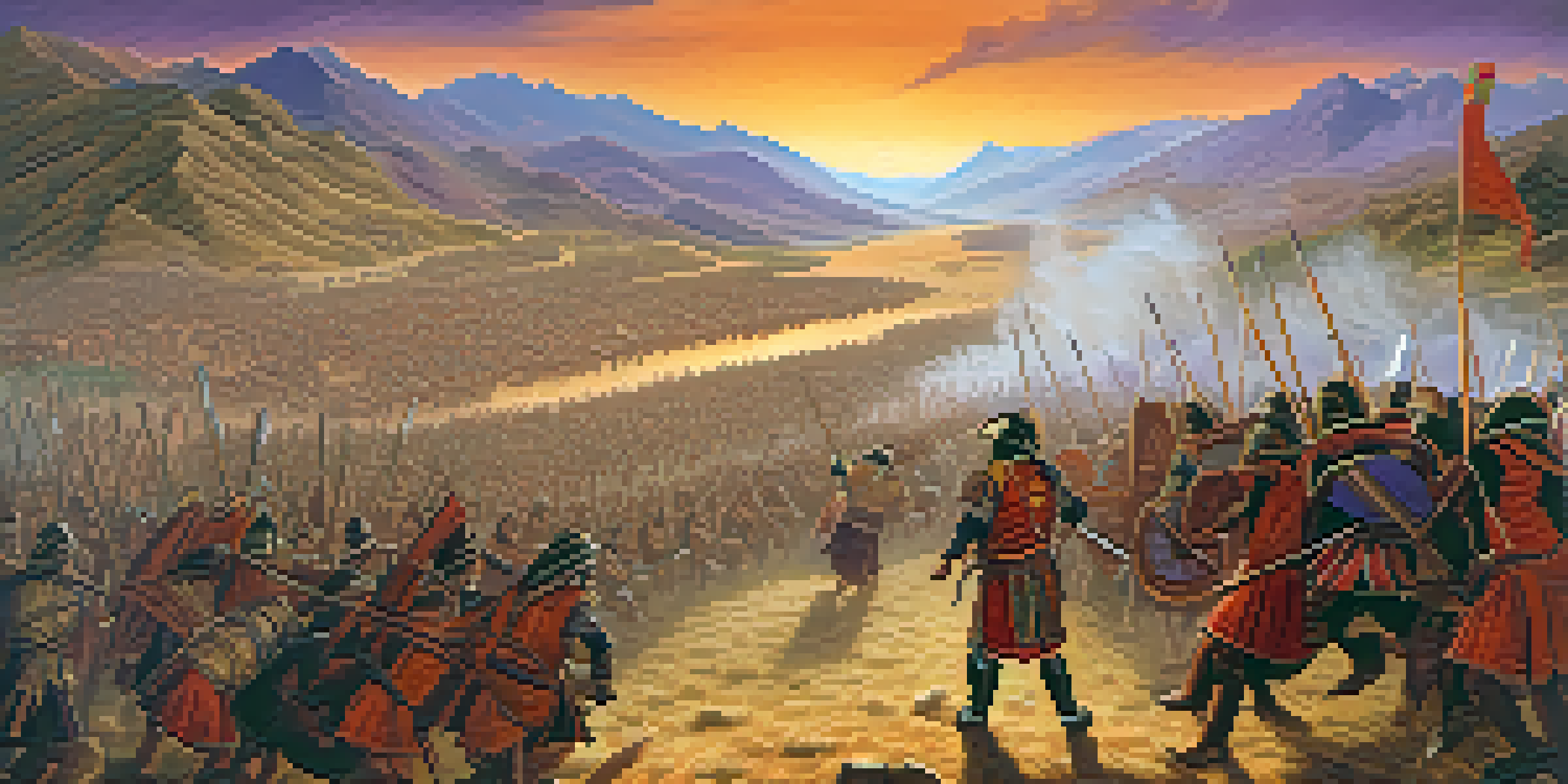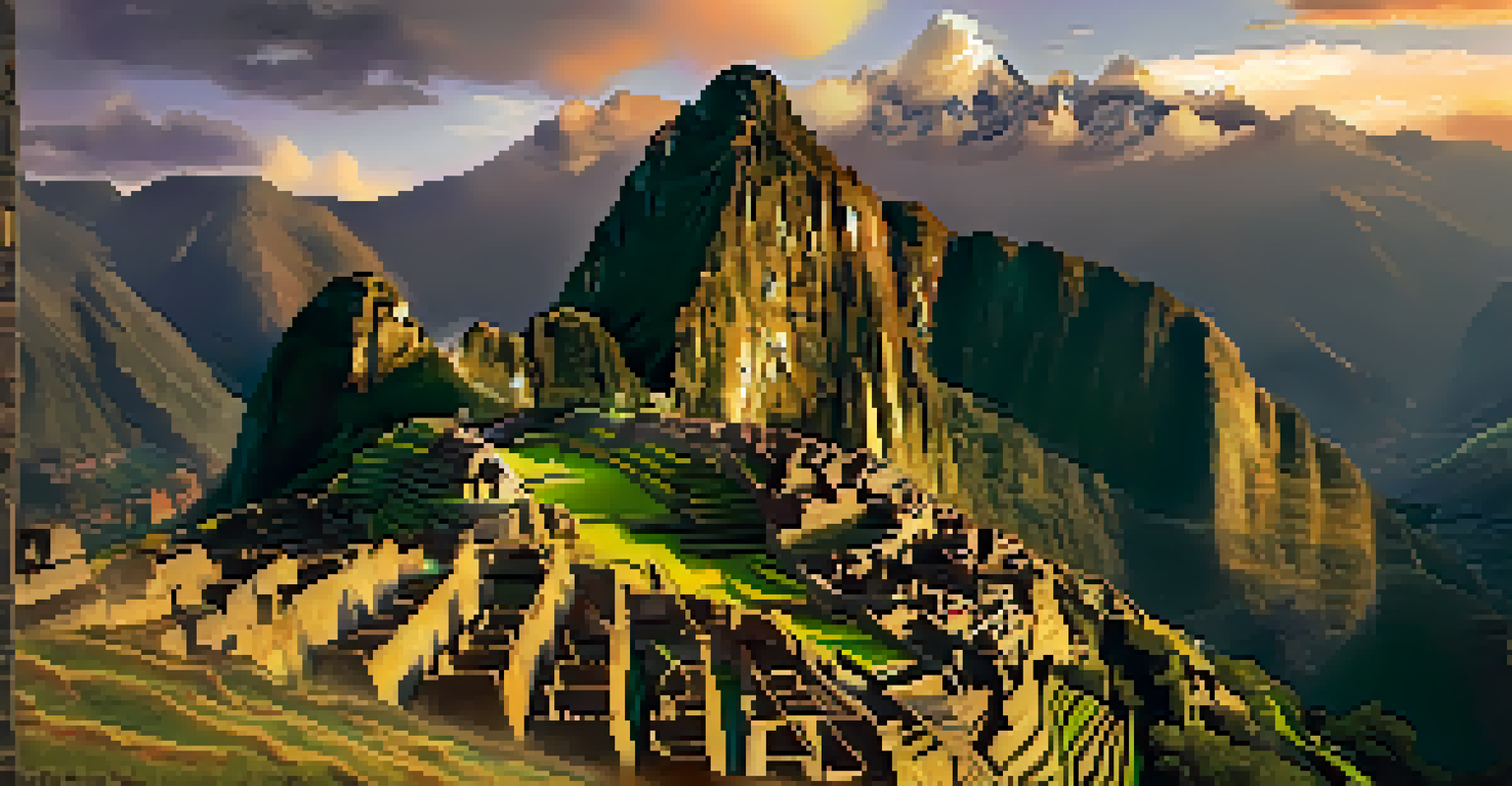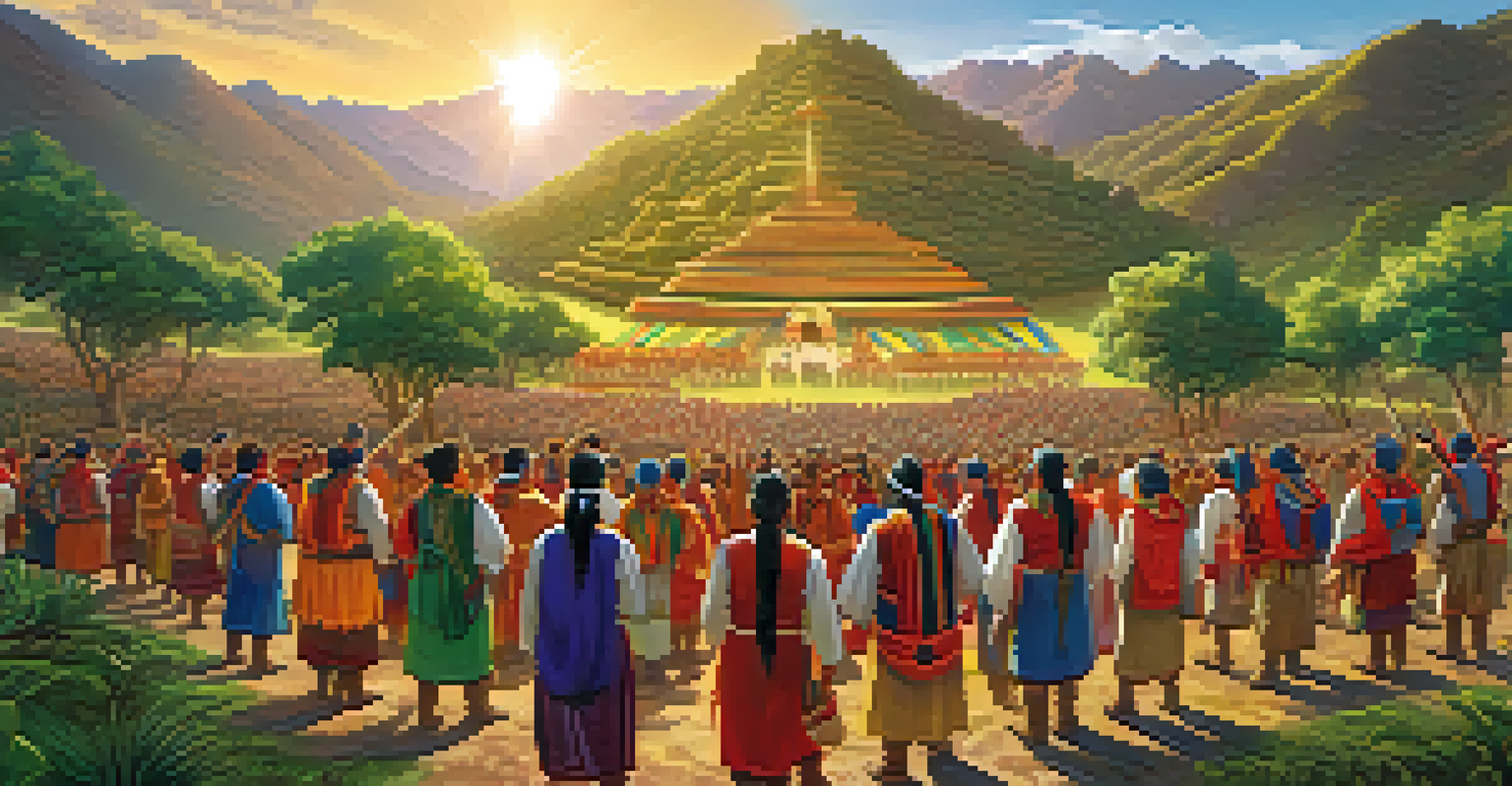Manco Inca: The Resistance Against Spanish Conquest

Introduction: The Context of Spanish Conquest in Peru
In the early 16th century, the Spanish Empire set its sights on the rich lands of the Inca Empire. Driven by a thirst for gold and glory, conquistadors invaded, leading to widespread upheaval and suffering. The resulting chaos created a fertile ground for resistance, with leaders like Manco Inca emerging to defend their homeland.
The most effective way to destroy people is to deny and obliterate their own understanding of their history.
Manco Inca, born into the Inca royal family, became a symbol of resistance against the Spanish. His unique position allowed him to understand both Inca traditions and the foreign threats they faced. This duality played a crucial role in his leadership as he navigated the complexities of war and diplomacy.
As the Spanish continued their brutal conquest, many native leaders were either killed or subdued, but Manco Inca’s resilience set him apart. His story is not just about one man's fight; it's about a collective struggle that inspired many to resist the overwhelming odds they faced.
Manco Inca's Early Life and Rise to Power
Manco Inca was born around 1516, a member of the Inca royal lineage, and was groomed for leadership from an early age. His upbringing amidst the political intricacies of the Inca Empire gave him significant insights into governance and military strategy. When the Spanish arrived, his royal status made him a key figure in the resistance efforts.

Initially, the Spanish saw Manco Inca as a potential ally, hoping to use his influence among the Incas. However, as the true intentions of the conquistadors became clear, Manco realized that collaboration would only lead to further exploitation of his people. This realization propelled him to take a stand against the invaders.
Manco Inca: A Leader of Resistance
Manco Inca emerged as a pivotal figure in the fight against Spanish conquest, symbolizing indigenous resistance and unity among the Inca people.
In 1536, after witnessing the brutal treatment of his people, Manco Inca decided to lead a rebellion. His early experiences and knowledge of both cultures positioned him as a crucial leader in the fight against the Spanish forces.
The Initial Rebellion: Siege of Cusco
In 1536, Manco Inca launched a daring campaign to reclaim Cusco, the heart of the Inca Empire. His forces laid siege to the city, employing guerrilla tactics and leveraging local knowledge of the terrain to their advantage. This initial rebellion caught the Spanish off guard, showcasing the resilience and determination of the Inca people.
Injustice anywhere is a threat to justice everywhere.
The siege lasted several months, during which Manco Inca rallied support from various tribes disillusioned with Spanish rule. His ability to unite disparate groups under a common cause illustrated his leadership skills and deep commitment to the Inca heritage. Unfortunately, despite some successes, the Spanish eventually reinforced their defenses.
Despite the ultimate failure to reclaim Cusco, the siege marked a significant turning point in the resistance movement. Manco's efforts galvanized other indigenous leaders, proving that the Spanish could be challenged and that unity among the native tribes was essential for survival.
Manco Inca's Strategic Alliances and Retreat
After the siege, Manco Inca recognized the importance of forming alliances with other indigenous groups. He sought to unite various factions, including the Quechua and Aymara peoples, in a collective resistance against the Spanish. This strategic move not only strengthened his forces but also fostered a sense of shared identity among the tribes.
However, the challenges of uniting diverse groups with different interests were significant. Manco Inca had to navigate complex relationships and negotiate terms that would benefit all parties involved. His diplomatic skills were put to the test as he worked to maintain unity in the face of external threats.
Cultural Legacy of Resistance
His efforts not only aimed to reclaim territory but also helped preserve Inca traditions and fostered a renewed sense of cultural identity among indigenous populations.
Ultimately, after facing overwhelming odds, Manco Inca retreated to the mountains, where he continued to inspire resistance efforts. His ability to adapt and regroup demonstrated his resilience and commitment to the fight, ensuring that the spirit of resistance lived on.
The Legacy of Manco Inca: Symbol of Resistance
Manco Inca's legacy extends beyond his military campaigns; he became a symbol of indigenous resistance against colonial powers. His determination to defend his homeland resonated with many, inspiring future generations to stand up against oppression. Even today, Manco Inca is celebrated as a hero in Peruvian culture.
The stories of his bravery and leadership have been passed down through oral traditions and written accounts, serving as a testament to the resilience of the Inca people. His life and struggles highlight the broader narrative of resistance against colonialism, emphasizing the importance of cultural identity and autonomy.
Manco Inca's impact is still felt in modern Peru, where he is honored in various forms, from literature to festivals. His story reminds us of the enduring spirit of those who fight for their rights and heritage, making him a pivotal figure in the history of South America.
Cultural Significance of Manco Inca's Resistance
Manco Inca's resistance against Spanish colonization had profound cultural implications for his people. His efforts helped to preserve Inca traditions and foster a sense of pride among the indigenous population. By standing up to the Spanish, he reinforced the importance of cultural heritage in the face of external pressures.
The resistance movement led by Manco Inca sparked a revival of indigenous identity, encouraging people to embrace their roots and resist assimilation. This cultural resurgence was crucial in maintaining the continuity of Inca customs, languages, and beliefs, even as colonial forces sought to impose their own.
Enduring Impact on Indigenous Rights
Manco Inca's legacy continues to inspire contemporary movements advocating for indigenous rights and cultural preservation in Peru and beyond.
Today, Manco Inca is celebrated not just as a military leader, but as a cultural icon representing the struggle for identity and autonomy. His legacy continues to inspire movements advocating for indigenous rights and cultural preservation, highlighting the ongoing relevance of his resistance.
Conclusion: Manco Inca's Enduring Legacy
Manco Inca's life and resistance efforts are a powerful reminder of the complexities involved in the fight against colonialism. His ability to lead, inspire, and unite diverse groups under a common cause is a testament to his exceptional leadership skills. While the challenges he faced were immense, his story remains a source of inspiration.
The legacy of Manco Inca serves as a beacon for those who continue to advocate for indigenous rights and cultural preservation. His determination to protect his people and homeland resonates in contemporary discussions about identity and autonomy. Manco Inca's narrative is not merely historical; it is a living story that informs current struggles.

As we reflect on Manco Inca's contributions to the resistance against Spanish conquest, we celebrate the resilience of the Inca people and their enduring spirit. His legacy reminds us that the fight for justice and identity is a timeless pursuit, echoing through generations.